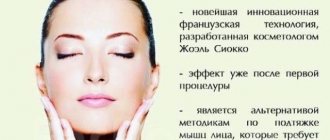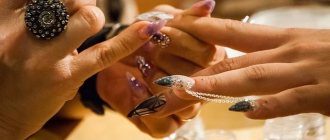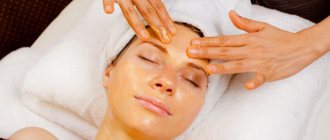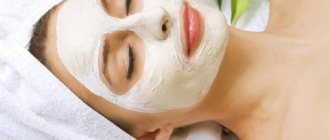What is the difference between laser devices in cosmetology?
In fact, it is not at all important to the consumer of salon cosmetic procedures what is the source of photons in the laser device, what method is used to pump them, and what is the working fluid of the laser. It is important for the client to understand the main thing - how this or that type of rays affects his skin. Essentially, the effect of any laser is to instantly heat certain structures to a high temperature.
And which structures will be heated the most by a certain type of laser depends on the wavelength of its radiation, because this is what determines its absorption by certain molecules.
Today, devices have been created that emit in the wavelength range from 400 to 10600 nm with a step of 5 to 100 nm. In addition to the wavelength, beam parameters such as the pulse duration and its energy density are also important. The total cosmetic effect of the procedure depends on these parameters, which can be expressed in evaporation (ablation) of tissues, coagulation of proteins or heating of cells. In some cases, as when using a CO2 laser (carbon dioxide), the effect can be combined. All these effects one way or another lead to:
- improving the appearance of the skin;
- stimulation of metabolic processes;
- production of elastic skin fibers;
- elimination of scars and pigmented areas;
- smoothing out wrinkles, etc.
However, due to the different depths of exposure of the skin to different laser beams, these effects manifest themselves differently and persist for different periods of time.
Lasers emitting in the range up to 800 nm are not used for rejuvenation procedures, because Such radiation is best absorbed by skin chromophores, primarily melanin. Therefore, the main purpose of such devices is to eliminate various pigmented skin formations - freckles, moles, hemangiomas, spider veins, tattooing, etc.
The price of devices for fractional laser rejuvenation exceeds 100,000 rubles, so there can hardly be any talk of purchasing them for use at home.
The rejuvenating effect of long-wave laser beams differs in two parameters, the combination of which gives a total of 4 different rejuvenation techniques. So, you can influence the skin with a laser spot, i.e. whole beam. The effect on the skin is continuous. This method is considered classic. Another technique involves cutting the laser beam into fractions, i.e. dividing it into several dozen individual thin rays with a diameter of 100-250 microns. This technique is called fractional laser rejuvenation. Unlike the classical technique, the impact of such rays can extend to the entire depth of the dermis, with intact parts interspersed with coagulated ones, which creates an additional lifting effect.
The second basic feature by which lasers for rejuvenation differ is the mechanism of action on the skin. First of all, there are two main types of effects - ablation and coagulation. According to this criterion, all lasers in cosmetology can be divided into ablative (ablative) and non-ablative (non-ablative). Ablative lasers work by evaporating water along with skin cells, which is essentially dermabrasion.
This group of lasers primarily includes erbium, or cold, laser with a wavelength of 2940 nm, carbon dioxide (10600 nm) and Er,Cr:YSGG lasers (2790 nm).
There are many more non-ablative lasers. This group includes lasers “on glass”, diode, fiber lasers; neodymium lasers operate on the same principle. The target tissues for their action are mainly the protein molecules of skin cells - hemoglobin, collagen, elastin. Under the influence of non-ablative lasers, they coagulate and heat nearby cells, which leads either to the death of non-viable skin cells or to the active division of living skin cells.
Thus, laser rejuvenation can be classic ablative or non-ablative, or fractional ablative/non-ablative.
Where is Morpheus8 effective?
Morpheus8 shows high tissue lifting results in the neck, face, eyebrows, upper and lower eyelids, as well as in areas of the body with severe sagging skin.
By performing several passes (2-3) with the Morpheus8 attachment, inserting the needle electrode at different depths, it is possible to increase the volume of coagulation and reduction of the FSF and adipose tissue, which leads to more pronounced skin tightening and remodeling of the dermis.
Fractional laser rejuvenation technique
The rejuvenation technique using a fractionated beam of a cold ablative laser is also called fractional drilling (i.e. drilling). It is produced mainly using a fotona erbium fractional scanner. For the same procedure (cutera) has developed an ablative YSGG laser with a fractional solution. Under its influence, “ablation columns” are formed to a depth of 24 microns at minimum beam power to 1.2 mm at maximum. The ablation column is essentially a column of emptiness or a hole in the skin with a diameter of about 100 microns, and the damage to the skin should not exceed 20% of the total area of the treated surface. Such columns close within 2-3 days without scar formation, which provides a quick and effective facelift.
Fractional laser rejuvenation cannot be performed independently, without the participation of a qualified specialist.
The cold fractional ablation procedure is of great importance in the treatment of post-acne and other types of scar tissue, because allows you to significantly reduce the area of formations in one session with a minimum rehabilitation period.
Non-ablative laser rejuvenation is performed primarily using a neodymium laser. The fractional technique of such rejuvenation is called clear lift. During this procedure, no visible damage to the skin occurs, but coagulation photothermolysis occurs. When treated with this laser, columns of coagulate are also formed in the skin at a depth of up to 1.5 mm, with an approximate density of 1000 pieces per square centimeter of skin.
This procedure is used to treat any areas of the skin that require correction, including the skin of the hands, sensitive skin around the eyes, and also to eliminate stretch marks after weight loss. Indications and contraindications for fractional laser rejuvenation are similar to those that apply to other types of laser procedures.
What makes Morpheus8 non-surgical lifting unique?
Morpheus8 is an innovative technology that is used to lift, tighten, create beautiful contours, smooth sagging skin and uneven soft tissue texture. With Morpheus8, you can perform non-surgical lifting of the neck, face, eyebrow area, as well as general tightening of the skin of the body.
Morpheus8 is essentially a hybrid of two RF technologies. The result was a system of bipolar radiofrequency coagulation of subcutaneous fat and non-ablative dermal remodeling.
The Morpheus8 handpiece features silicone-coated needle electrodes that are inserted through the skin into the superficial fatty tissue located just below the skin. The tips of the positively charged, uncoated needle electrodes release powerful RF energy, which causes local fat tissue coagulation and compaction, as well as contraction of the fibroseptal network connected to the skin. Reduction of adipose tissue and fibroseptal network causes skin tightening. The RF energy then flows from the tips of the positively charged needle electrodes to the negatively charged diamond-shaped surface electrodes through which the needle electrodes protrude. The RF flow to the negatively charged external electrodes is mild, non-necrotic and thickens the dermis.
The Morpheus8 attachment delivers the energy of 24 monopolar silicone-coated electrodes under the skin into the superficial adipose tissue. A patented pulse of RF energy is delivered to the fat tissue. It heats the adipose tissue to 70 °C and coagulates (shrinks) the subdermal adipose tissue and, importantly, shortens the horizontal, oblique, vertical connective tissue fibers going to the skin, called FSS (fibroseptal network). This ensures significant compaction of soft tissues and elimination of overlying wrinkles, scars, uneven skin texture, pores, even stretch marks and acne scars. The silicone coating of the microneedles protects the skin from any thermal damage.
This non-thermal dermal effect is more delicate and does not require a long recovery period compared to fractional light ablation, which makes the Morpheus8 attachment safer when working with dark skin phototypes.
Behind all these scientific explanations lies a rather simple meaning: thanks to the multidirectional action of radio frequency energy, tissues are powerfully tightened from the outside and inside. It turns out to be a wonderful lifting effect! And there is no need for any incisions or long-term rehabilitation!
Avdeyuk Elena Vladimirovna
Dermatovenerologist, cosmetologist
Contraindications
- oncological diseases
- psoriasis, herpes, atopic dermatitis, eczema.
- Inflammatory phenomena at the treatment site
- chronic or infectious diseases in the acute stage
- blood diseases
- cardiovascular failure
Laser treatment is also not recommended:
- Women during lactation, pregnancy, as well as after prolonged exposure to the sun and visiting a solarium.
- After mechanical dermabrasion or chemical peeling (deep, medium) performed less than 2 months ago, laser therapy should be postponed.
Is there a recovery period after Morpheus8 lifting?
If you do one procedure, it will be more powerful in its effect. However, after it there is no pronounced formation of crusts, as after some laser procedures. But still, after such a procedure, you should take care of the affected areas. Patients undergoing a series of three Morpheus8 corrective treatments at moderate fluence require one day off after each treatment. Therefore, Saturday can be considered an ideal day for the procedure.
Who is Morpheus8 non-surgical lifting recommended for?
Non-surgical lifting is recommended for patients who want to tighten their skin, reduce wrinkles or improve skin texture, but are concerned about the risks and downtime associated with surgical procedures. Morpheus8 is the optimal means for lifting the eyebrows, lower eyelids, cheeks, jawline and sagging neck skin.
Radiofrequency lifting is ideal for patients with dark skin phototypes (skin phototypes IV–VI), in which it is important to protect the epidermal-dermal junction from thermal effects. The silicone-coated portion of the needle electrodes ensures that thermal damage to the epidermal-dermal junction is minimized.
Can complications occur after the Morpheus8 procedure?
The number and severity of complications after Morpheus8 are very, very low. Sometimes, especially on the thin skin of the zygomatic arch or on the forehead, a superficial burn may occur that does not affect all layers of the skin. This occurs due to incomplete contact, where all RF currents are applied to a relatively small surface area of the negative return electrode. But such thermal damage to the surface layers caused by RF energy is rare (less than 2%) and, as a rule, heals without additional intervention.
Can Morpheus8 be combined with other treatments?
There are various protocols when radio wave lifting is combined with other procedures.
Most often, in addition to the Morpheus8 non-surgical face lift, patients simultaneously undergo several other aesthetic procedures (for example, dermal fillers and Botox) to correct other age-related changes that cannot be corrected by lifting and tightening the skin. Intense pulsed light (IPL) photorejuvenation can be performed at the same time as the Morpheus8 lift to reduce browning, age-related pigmentation disorders, redness, rosacea and fragile capillaries. For volume loss in certain areas of the face, dermal fillers may be used.
When recovery has occurred after Morpheus8 lifting, a thread lift can be applied to enhance the achieved effects.
Avdeyuk Elena Vladimirovna
Dermatovenerologist, cosmetologist
How long-lasting are the results achieved with Morpheus8?
Because Morpheus8 results in significant remodeling of the deeper tissues of the face as well as the skin, the lifting and tightening results can last for several years.
To prolong the success of the Morpheus8 lift, a combination of radiofrequency soft tissue heating treatments is recommended, which is painless and non-invasive and supports increased skin collagen content, smooth texture and helps reduce wrinkles.
In addition, Morpheus8 is an excellent way to improve the results achieved through face lift surgery and blepharoplasty. The skin inevitably begins to age, and when the aesthetic improvements achieved through surgical lifting wear off, the Morpheus8 procedure can restore the lost results. Most often, the Morpheus8 procedure is performed one year after surgical facelift and/or blepharoplasty.










